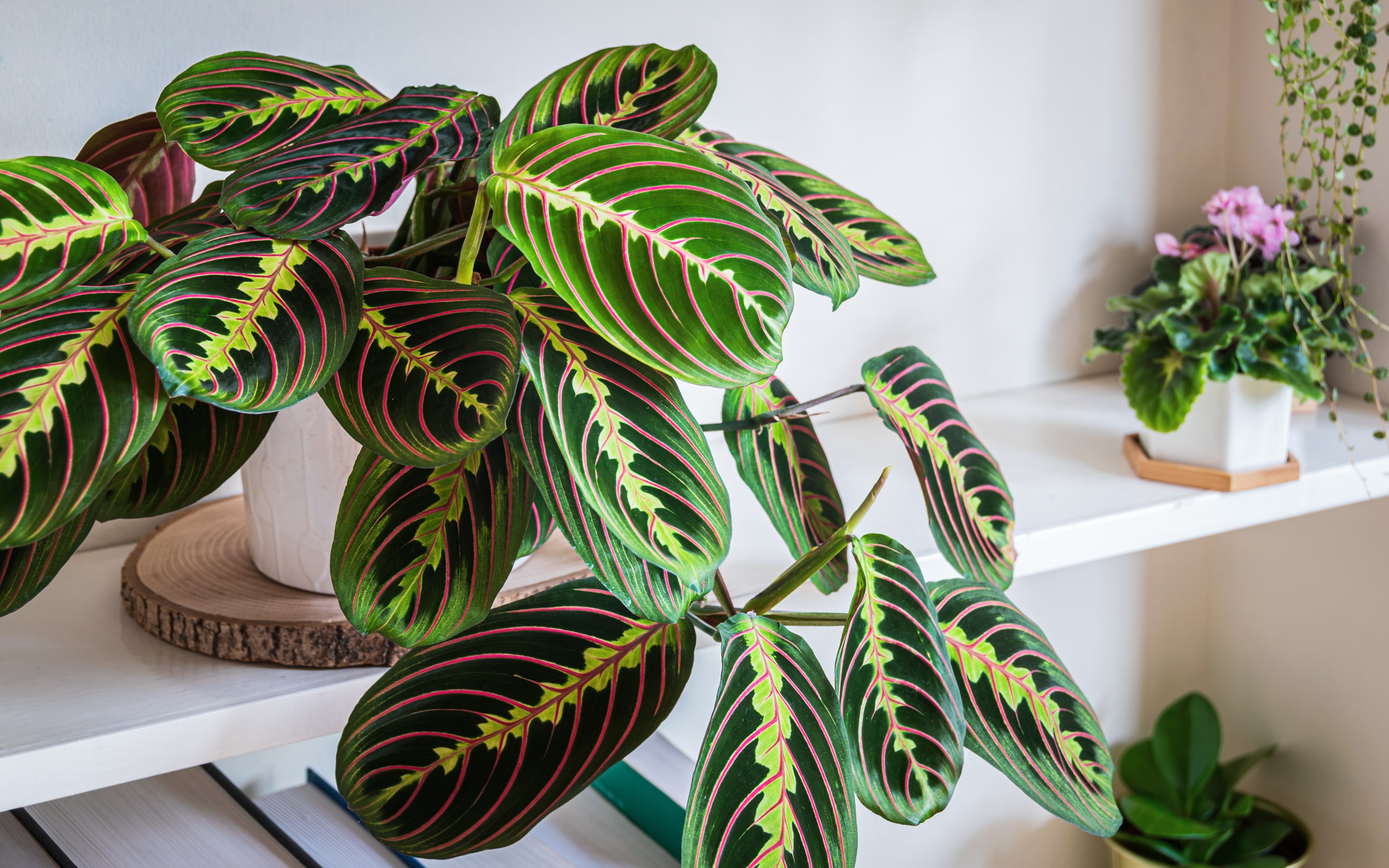The Prayer plant: A Fascinating Houseplant
The Prayer Plant, scientifically known as Maranta leuconeura, is a captivating houseplant renowned for its striking foliage and unique behavior. Native to the tropical rainforests of Brazil, this perennial herb belongs to the Marantaceae family, which includes other popular houseplants like Calatheas.
The plant’s common name stems from its intriguing diurnal movement. During the day, its leaves unfurl horizontally, showcasing their vibrant patterns. However, as dusk approaches, the leaves begin to fold upwards, resembling hands clasped in prayer. This nyctinasty, the scientific term for such plant movement, is a fascinating adaptation that helps the plant conserve moisture and protect itself from nocturnal predators.
:max_bytes(150000):strip_icc()/grow-maranta-inside-1902647-02-de777eb8e7804c3d86d658cd242583d6.jpg)
One of the most captivating aspects of the Prayer Plant is its diverse foliage. Depending on the variety, leaves can display a mesmerizing array of colors:
Red/Tri-Colored Maranta (M. leuconeura var. erythrophylla): This is perhaps the most common variety, featuring bold red veins contrasting against dark green leaves with lighter green splotches.

While the Prayer Plant adds a touch of the tropics to any home, it does require specific care to thrive:
Indirect Light: Prayer Plants prefer bright, indirect light. Avoid placing them in direct sunlight, as it can scorch their delicate leaves.

Consistent Moisture: The soil should be kept consistently moist but not waterlogged. Allow the top inch or two of soil to dry out slightly between waterings.
High Humidity: As a tropical plant, the Prayer Plant thrives in high humidity.
Warm Temperatures: Prayer Plants prefer warm temperatures between 65-80°F (18-27°C).
Well-Drained Soil: Use a well-draining potting mix that is rich in organic matter.
Regular Feeding: Fertilize the Prayer Plant during the growing season (spring and summer) with a balanced liquid fertilizer diluted to half strength.
Division: The most common method of propagation is by dividing the plant. Gently separate the root ball into two or more sections, each with its own set of roots and shoots.
Brown Leaf Tips: This usually indicates low humidity or dry air.
Mealybugs and Scale: These pests can infest the plant. Treat them with insecticidal soap or neem oil.
The Prayer Plant is a rewarding houseplant for those who appreciate its unique beauty and intriguing behavior. With proper care, this captivating plant will bring a touch of the rainforest into your home and provide years of enjoyment.
Beyond its aesthetic appeal, the Prayer Plant is believed by some to have air-purifying qualities, helping to remove toxins from the air. While further research is needed to confirm these claims, the plant undoubtedly contributes to a healthier indoor environment by increasing humidity and adding a touch of nature to your living space.
The Prayer Plant, with its vibrant foliage and captivating movements, is a truly unique and rewarding houseplant. By understanding its specific needs and providing the right care, you can enjoy the beauty and wonder of this fascinating plant for years to come.
